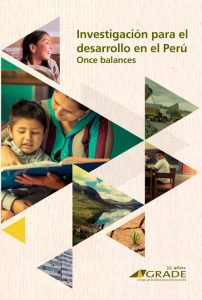Inequidades en educación
Investigación para el desarrollo en el Perú: once balances
| Year | : | 2016 |
|---|---|---|
| Author/s | : | Santiago Cueto, Alejandra Miranda, María Cristina Vásquez |
| Area/s | : | Education and learning |
Cueto, Santiago; Alejandra Miranda y María Cristina Vásquez (2016). Inequidades en educación. En GRADE. Investigación para el desarrollo en el Perú: once balances. Lima: GRADE.
This study presents the current status of four groups—demarcated by gender, ethnicity, poverty, and disability—exploring educational inequalities based on laws and indicators of access, achievement, and learning opportunities. In addition, it analyzes the content of the Public Teaching Reform Act.
The results show that although there are no large differences in educational indicators between men and women, there are other inequities, such as traditional stereotypes, that are reinforced at school. In terms of ethnicity, both indigenous and Afro-Peruvians have gaps in access to education, opportunities, and achievement when compared to the rest of the population. Additionally, poor students have less access to secondary education, attend schools without all basic facilities, and have teachers without higher training. Also, handicapped students not only reach lower educational levels, but also encounter barriers such as inadequate infrastructure, unspecialized materials, and unprepared teachers.
As for the Public Teaching Reform Act, it encourages equity and no discrimination, but the incentives for teaching at schools attended mostly by disadvantaged students may not be sufficient. In this way, the state and the school reinforce inequalities even though all the groups are protected by laws and regulations. The main problem is compliancy with the law. As a general goal, public policies should be aimed at improving educational indicators, and also at reducing the gaps—in other words, equating upwards.







